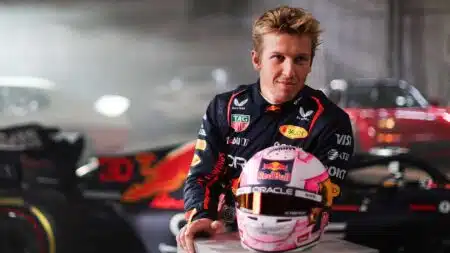
F1 snore-fest shows new cars badly needed: Up/Down Japanese GP
The 2025 Japanese GP showed a much more extreme change than next year's technical regulations is needed to make racing at classic F1 tracks interesting
I must be getting old: I am starting to think it’s possible for road cars to have too much power. I can remember suggesting as much to Gordon Murray when I first drove the McLaren F1 and he railed at the idea. Without wishing to speak for him, I think his view was that so long as it was properly engineered to take it, there should be no limit as to how much power a road car should have.
But that was nearly 20 years ago and I’ve just been reading a test of a car called a Hennessey Venom that has not the 627bhp of the McLaren F1 but more than twice as much: 1284bhp to be precise. The question is where is it going to stop?
Twenty years before the McLaren F1 the most powerful road car you could buy was a Ferrari Berlinetta Boxer whose claimed 380bhp said more about the state of statistical creative accounting in Maranello in the early ‘70s than the true output of its 4.4-litre motor. Let’s say it had around an honest 320bhp or, put another way, about half the power of a McLaren F1. If this trend continues by the year 2033 the McLaren F1, Bugatti Veyron or Hennessey Venom of that era will be passing 2500bhp…
This is so clearly nuts I’m certain it won’t happen – just as certain as it happens as I was on that day 19 years ago when I pronounced no-one would ever build a car faster than the McLaren F1.
Last week I drove an Ariel Atom costing less than a top of the range diesel BMW 3-series that would out-accelerate a McLaren F1 to all speeds remotely commensurate with retaining your licence and liberty. And this is not the usual modern smoke and mirrors game where unfeasible data is gathered as much through launch control, traction control, four-wheel drive and flat-shifting paddle changes: the Atom is as analogue now as the F1 was then. Yet Ariel says it will hit 60mph in 2.7sec.
As you might imagine at no stage during my time with the Ariel did I feel it lacking in power. On the contrary, despite 25 years testing and racing some often remarkably quick cars, the Atom damn near took my breath away every time I breathed on the accelerator. I have no requirement for anything wearing a number plate ever to accelerate harder than that.
Of course weight plays an even bigger role in determining a car’s performance than power and, at just over half a tonne, the Atom doesn’t carry much. Even so it interests me that its power to weight ratio is remarkably similar to those of both the McLaren F1 and the Bugatti Veyron. And I think it’s enough. I’d never seek to ban cars with still crazier outputs but I do find myself looking at cars with four figure power outputs and wondering whether their true appeal is not simply to demonstrate that mine really is bigger than yours.
It is sad that this power struggle means the new generation of supercars increasingly coming to be defined by their engine outputs. Not only is that number a useless and quite often misleading indication of performance, it puts pressure on manufacturers to find ever more power at the almost inevitable cost of adding more weight.
When Porsche, Ferrari and McLaren launch their new generation of hybrid hypercars, I’ll be trying hard to focus not on their bald power outputs but how cleverly or otherwise they use that power to enhance the driving experience. That’s the point I think is too often missed these days: find more power if you really think your car needs it, but please don’t forget about the bloke behind the wheel.

The 2025 Japanese GP showed a much more extreme change than next year's technical regulations is needed to make racing at classic F1 tracks interesting

Max Verstappen looks set to be pitched into a hectic, high-stakes battle for F1 victories in 2025, between at least four teams. How will fans react if he resorts to his trademark strongman tactics?

Red Bull has a new team-mate for Max Verstappen in 2025 – punchy F1 firebrand Liam Lawson could finally be the raw racer it needs in the second seat

The 2024 F1 season was one of the wildest every seen, for on-track action and behind-the-scenes intrigue – James Elson predicts how 2025 could go even further